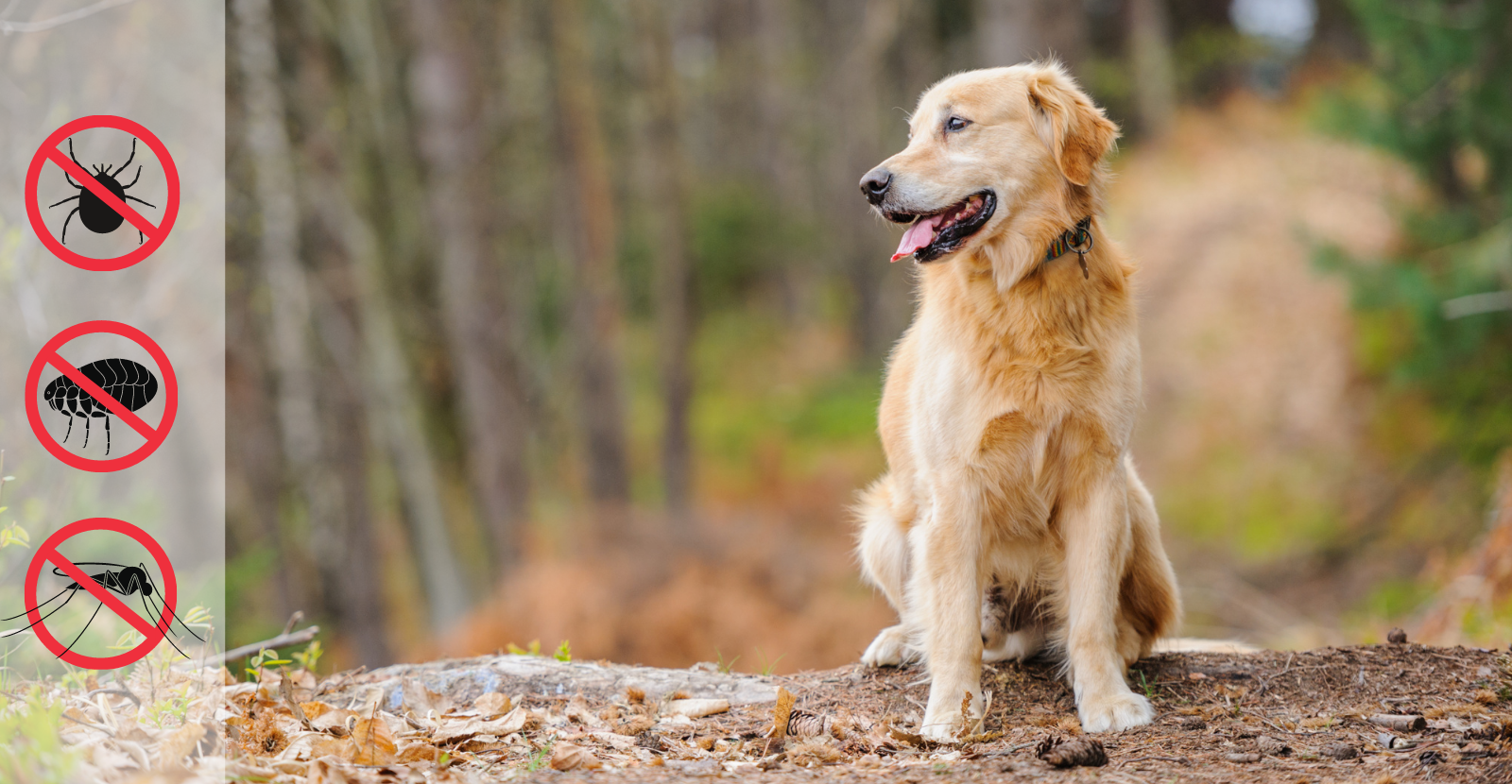Ticks are not just a nuisance but can also pose serious health risks to both humans and dogs. With the increase in tick populations due to warmer temperatures and shorter freezes, it is crucial to stay informed and take preventive measures. We reached out to a renowned veterinarian, Dr. Dan Cederstrom, who has extensive experience in dealing with ticks and their associated diseases. His insights shed light on the importance of tick protection and the dangers they pose.
Dr. Cederstrom explains that ticks thrive in the environments we and our dogs frequent, such as wooded areas and hiking trails. This season, in particular, has seen a surge in tick activity due to the milder winters and wet springs. It's essential to understand that ticks can transmit a wide range of diseases, including Lyme disease, Rocky Mountain Fever, and Ehrlichiosis. These diseases can have severe consequences if left untreated, making tick prevention all the more crucial.
In addition to the risks posed by fleas and ticks, Dr. Cederstrom also highlights the importance of joint health in dogs. Contrary to popular belief, arthritis is not solely a concern during colder months. Dogs can suffer from joint pain and stiffness year-round, especially during the summer months when humidity and higher temperatures exacerbate the symptoms. Dr. Cederstrom shares his positive experiences with Glyde Mobility Chews, a revolutionary treatment that promotes joint health and cartilage development. He recounts a success story of a Labrador named Burk who experienced significant improvement in mobility and overall well-being after incorporating Glyde into his daily routine.
The Tick Lowdown
Ticks are parasites living in the places we (and our dogs) like to visit. This season has been one of the biggest ones for ticks and fleas. Mostly, because of the weather, where our freezes have not been as long as in years past. The warmer temperatures have prevented the killing of these pests, turning into more of a hibernation instead. Pair that with the wet springs and hot summer temperatures and you see more of these ticks than ever.
You can find them in trees, on the ground, and walking on your favorite trails. Some people may have heard of diseases like Lyme disease, Rocky Mountain Fever, and Ehrlichiosis. But did you realize these diseases most generally come from ticks? And that’s just the tip of the diseases ticks carry. If you know someone who had one of these diseases, most likely they were contracted by a tick bite. Often, the person did not realize there was a disease-carrying tick living on them.
It is very important to protect you and your dog from ticks when adventuring outside. This information is not to prevent you from going outside, it simply arms you with information on the proper steps to protect both you and your dog. Read on for some tips to help you keep the ticks outside when you are outside.

3 Ways to Protect Yourself from Ticks:
Here are some common ways to protect yourself so that you can get outside, but not get bit:
- Wear protective clothing. You can pretreat clothing and gear with permethrin and it will last for 6 weeks or several washes. This is if you intend to be outside for long periods of time. You can also purchase clothes already treated with permethrin and guaranteed to last for several washes. Wearing a hat helps prevent ticks from falling on you.
- Use an EPA-registered bug spray repellent. If you are heading out for a shorter period of time, insect repellents with DEET, picaridin, oil of lemon eucalyptus, and others can help protect you for 6 – 12 hours. Always follow instructions for use.
- Check thoroughly for ticks when you come inside. Check your clothing, and around your shoe and sock line. Key areas ticks like to hide are in your hair, under the arms, around the waist and other places hard to see.
Be sure to check out these additional resources from the CDC about Avoiding Ticks.
Tick Talk from the Veterinarian’s Perspective
We were pleased and honored to talk to Dr. Dan Cederstrom, DVM & owner of Park Grove Pet Hospital, located in Cottage Grove, Minnesota about the big tick season many of us dog owners have been up against this summer. Dr. Dan has become a local “Tick Expert” because of all his experiences with them. Here is what he shared with us.
We are hearing a lot about ticks this season. Why?
Dr. C: Many say it is because of the continuing high temperatures, our winters have fewer freezing temperature days to truly kill insects. And of course, this year, while we have been very dry in Minnesota, many areas have had wetter conditions, which increase tick populations.
Why should we be concerned with ticks?
Dr. C: In general, ticks are very bad. I get on my soapbox about ticks because I know what they can do. Almost 3 years ago, I spent a week in the hospital from a tick bite. I was very, very sick. At the time, it was summer, and I was dressed like it was winter out because I was so cold. I had muscle aches, fever, and chills. Finally, I told my family, I think I need to go to the hospital. We thought maybe it was just the bad flu, but I was there for a week. We finally found out I had contracted anaplasmosis from a tick bite. I never found a tick on me.
To all my pet patients, and their families, we strive to tell them the importance of being mindful about protecting themselves from ticks, especially when you are in the same environment with your dog and there are ticks. The Minnesota Department of Health put together a brochure about ticks and we hand it out to our families in our clinics.
What advice can you give us for protecting our dogs from ticks?
Dr. C: Prevention in keeping ticks off your dogs is the biggest thing. There is a vaccination for Lyme disease for dogs, but not the other diseases. The key is to use a good tick preventative. The advances in flea and tick prevention for dogs has been tremendous. I had a friend who went hiking with their dog, and they pulled several ticks off themselves and none on their dog, thanks to the prevention efforts they used. Remember to always ask your veterinarian what they recommend.
Does flea and tick season occur only in spring and summer?
Dr. C: It has become a year-round effort for prevention. With temperatures increasing, we are seeing more fleas and ticks. On those days in the winter that are mild, and you get out with your dog, most likely the ticks are getting out too. This is why we strongly recommend protection from fleas and ticks all year long. Sure, the odds may be lower in the winter. I often say, "Ask yourself if it's worth it." If you have a problem arise because you stopped protecting your dog for the winter months, think of all the hassle and potential heartbreak you could have when it could have been prevented. Then, the odds don't matter anymore. Your dog does matter, and you are dealing with a problem that could have been prevented. For many of my patients, their dogs are their family and they will want to protect them when they can.
The great thing for pet parents is there are many options, depending on your preferences including oral, topical and collar pest prevention.
Know about arthritis in dogs
Our conversation with Dr. C switched over to arthritis in dogs, because as the makers of Glyde Mobility Chews, we know arthritis is a year-round concern. Many people mistakenly think it is during the colder months when joints are impacted most. However, most dogs will suffer year-round when their joints aren't protected.
Dr. C: Many people think achy joints are something to deal with in colder temperatures and they disappear in the warmer months. Dogs are just like humans, and many dogs suffer from sore joints thanks to the humidity and increased temperatures during the summer. I have seen the power of Glyde Mobility Chews firsthand.
“My daughter has a 9-year-old Labrador, Burk. He was overweight, and we put Burk on a diet with some high-quality weight management dog food. We paired the food with a regimen of Glyde Mobility Chews, and Burk is now a different dog. He is more active than ever before, and happier too. It makes me feel great when we see results like that.”
— Dr. Dan Cederstrom, DVM & owner of Park Grove Pet Hospital
Glyde Mobility Chews Protect Your dog
Glyde™ Mobility Chews is a revolutionary treatment that promotes joint health and cartilage development. Many products use the ingredients of glucosamine and chondroitin, which are also found in Glyde. Glyde has a unique combination of the two ingredients plus the all-natural added power of Green Lipped Mussel (GLM), a natural anti-inflammatory. Glyde Chews are a unique blend of ingredients at proven levels with dosing appropriate for any sized dog.
It is never too early to start with Glyde! Glyde is a great preventative for high-risk dog breeds to start at an early age. It is a joint health supplement, and no prescription is needed. For older dogs, if arthritis is present, Glyde is a great resource to help slow down the process and ease painful joints. It will only continue to benefit your pet as it ages and delay the signs of aging by helping the joints stay more mobile thanks to the unique blend of nutrients.

Special thanks to Dr. Dan Cederstrom of Park Grove Pet Hospital for helping with this information. Dr. Cederstrom first joined Park Grove in 1992 as a part-time associate veterinarian, and then eventually purchased the practice in 2001. He graduated from Iowa State University with a major in animal science and his Doctorate of Veterinary Medicine. He completed his internship at Boren Veterinary Teaching Hospital in Stillwater, Oklahoma.


.png)

